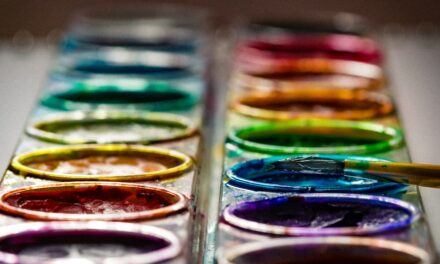In the realm of digital art, the transition from screen to print is a critical juncture that can significantly impact the final outcome of a piece. Quality and colour accuracy are paramount in this process, as they ensure that the artist’s vision is faithfully represented in the printed medium. Digital art, by its very nature, is created using a myriad of colours and intricate details that can easily be lost if not handled with care during the printing process.
The vibrancy of hues, the subtleties of shading, and the overall composition can all be compromised if the printing method does not adequately capture the original digital file. Moreover, colour accuracy is essential not only for aesthetic reasons but also for maintaining the integrity of the artwork. Artists often spend countless hours perfecting their pieces, and any deviation in colour can lead to a misrepresentation of their work.
This is particularly crucial for artists who sell their prints or exhibit them in galleries, as potential buyers and viewers expect a faithful reproduction of the original piece. Therefore, understanding the importance of quality and colour accuracy in printing digital art is fundamental for artists who wish to ensure that their work resonates with audiences in its printed form.
Summary
- Quality and color accuracy are crucial in printing digital art to ensure the artwork is represented as intended by the artist.
- When choosing the right printing technology for digital art, consider factors such as resolution, colour gamut, and ink type to achieve the best results.
- Select the best paper and ink for printing digital art by considering factors such as texture, weight, and archival quality to ensure longevity and colour vibrancy.
- Calibrate monitors and printers for color accuracy to ensure that the digital art looks consistent across different devices and when printed.
- Utilise colour management systems to maintain consistent results in printing digital art, ensuring that colours are accurately reproduced every time.
- Check and adjust resolution for high-quality prints to ensure that the digital art is printed at the optimal resolution for sharp and detailed results.
- Proof and test print digital art for quality assurance to catch any issues before printing in large quantities, ensuring the final prints meet expectations.
- Maintain and preserve printed digital art for longevity by using archival-quality materials and storing the prints in a controlled environment to prevent fading and damage.
Choosing the Right Printing Technology for Digital Art
Selecting the appropriate printing technology is a vital step in achieving high-quality prints of digital art. There are several methods available, each with its own advantages and limitations. Inkjet printing, for instance, is one of the most popular choices among artists due to its ability to produce vibrant colours and fine details.
This technology uses tiny droplets of ink to create images, allowing for a wide colour gamut and smooth gradients. Additionally, inkjet printers can handle various media types, from glossy photo paper to textured fine art paper, making them versatile for different artistic styles. On the other hand, giclée printing has gained prominence in recent years as a premium option for reproducing digital art.
This method employs high-quality inkjet technology but uses archival inks and papers to ensure longevity and fidelity. Giclée prints are often sought after by collectors and galleries because they offer exceptional detail and colour accuracy, closely resembling the original artwork. When choosing a printing technology, artists must consider factors such as budget, desired print quality, and the intended use of the prints.
By carefully evaluating these aspects, artists can select a printing method that aligns with their artistic vision and goals.
Selecting the Best Paper and Ink for Printing Digital Art
The choice of paper and ink plays a crucial role in determining the final quality of printed digital art. Different types of paper can significantly affect how colours appear and how details are rendered. For instance, fine art papers, such as cotton rag or watercolour paper, are often preferred for their texture and ability to absorb ink beautifully.
These papers can enhance the depth and richness of colours, providing a tactile quality that adds to the overall experience of viewing the artwork. Conversely, glossy photo paper may be suitable for images that require high contrast and sharpness but may not convey the same depth as fine art papers. Equally important is the selection of ink.
Archival inks are designed to resist fading over time, ensuring that prints maintain their vibrancy for years to come. Pigment-based inks are often favoured for their superior colour stability and longevity compared to dye-based inks. Artists should also consider the compatibility of their chosen paper with the ink type; some papers are specifically formulated to work best with certain inks, which can further enhance print quality.
By carefully selecting both paper and ink, artists can create prints that not only look stunning but also stand the test of time.
Calibrating Monitors and Printers for Color Accuracy
To achieve true colour accuracy in printed digital art, it is essential to calibrate both monitors and printers. Monitor calibration ensures that what artists see on their screens closely matches what will be printed. This process involves adjusting settings such as brightness, contrast, and colour balance to create a consistent viewing environment.
Professional calibration tools are available that can help achieve precise adjustments, allowing artists to work with confidence knowing that their digital files will translate accurately to print. Printer calibration is equally important in this process. Each printer has its own unique characteristics that can affect colour output.
By calibrating printers using specific profiles tailored to the chosen paper and ink combination, artists can ensure that their prints reflect the intended colours accurately. This step often involves creating test prints and making adjustments based on how closely they match the original digital artwork. Regular calibration is recommended, especially when changing paper types or inks, as these factors can influence colour reproduction significantly.
Utilizing Colour Management Systems for Consistent Results
Colour management systems (CMS) are invaluable tools for artists seeking consistent results across various devices involved in the printing process. A CMS helps standardise colour representation from digital creation through to printing, ensuring that colours remain consistent regardless of where they are viewed or printed. By implementing a CMS, artists can create ICC profiles that define how colours should be interpreted by different devices, including monitors, printers, and scanners.
Using a CMS not only streamlines the workflow but also reduces discrepancies that may arise from different devices interpreting colours differently. This is particularly beneficial when working with multiple printers or when collaborating with print shops that may have different equipment. By adhering to a colour management system, artists can maintain control over their work’s visual integrity throughout the entire production process, resulting in prints that accurately reflect their artistic intent.
Checking and Adjusting Resolution for High-Quality Prints
Resolution is another critical factor in producing high-quality prints of digital art. The resolution of an image refers to the amount of detail it contains, typically measured in pixels per inch (PPI). For prints, a resolution of at least 300 PPI is generally recommended to ensure sharpness and clarity.
When preparing digital files for printing, artists must check the resolution to avoid pixelation or blurriness in the final output. If an image’s resolution is too low for printing at the desired size, artists may need to consider resizing techniques or upscaling methods that can help maintain quality while increasing dimensions. However, it is essential to approach this with caution; simply enlarging an image without proper techniques can lead to loss of detail and clarity.
Therefore, understanding how resolution impacts print quality allows artists to make informed decisions about their digital files before sending them off for printing.
Proofing and Test Printing for Quality Assurance
Before committing to a full print run, proofing and test printing are essential steps in ensuring quality assurance for digital art prints. A proof print serves as a preliminary version of the final product, allowing artists to evaluate how their work translates from screen to paper. This stage provides an opportunity to assess colour accuracy, detail reproduction, and overall composition before finalising the print.
Test prints should be conducted on the same paper and using the same ink that will be used for the final prints. This practice helps identify any potential issues related to colour shifts or unexpected results due to different media types. Artists should take notes during this process and make necessary adjustments based on their observations.
By investing time in proofing and test printing, artists can significantly reduce the risk of errors in their final prints and ensure that they meet their artistic standards.
Maintaining and Preserving Printed Digital Art for Longevity
Once digital art has been successfully printed, maintaining and preserving these works becomes paramount for ensuring their longevity. Proper storage conditions play a crucial role in preventing damage from environmental factors such as light exposure, humidity, and temperature fluctuations. Prints should ideally be stored in acid-free sleeves or portfolios to protect them from dust and physical wear while avoiding direct sunlight exposure that can cause fading over time.
Additionally, framing prints using UV-protective glass can further safeguard against light damage while enhancing their visual appeal. Artists should also consider using archival-quality materials when mounting or framing their work to prevent chemical reactions that could degrade both paper and ink over time. By taking these preservation measures seriously, artists can ensure that their printed digital art remains vibrant and intact for future generations to enjoy.
In conclusion, navigating the world of printing digital art requires careful consideration at every stage—from understanding quality and colour accuracy to selecting appropriate technologies and materials. By following best practices in calibration, colour management, resolution checks, proofing, and preservation techniques, artists can create stunning prints that faithfully represent their original vision while standing the test of time.
When it comes to printing digital art, ensuring quality and color accuracy is crucial. One related article that delves into the world of contemporary art is An Introduction to the Museo d’Arte Contemporanea di Roma MACRO. This article explores the vibrant art scene in Rome and the significance of the MACRO museum in showcasing modern artworks. Understanding the context and environment in which digital art is displayed can further enhance the printing process to accurately capture the artist’s vision.
FAQs
What is digital art printing?
Digital art printing refers to the process of reproducing digital artwork, such as photographs, illustrations, and graphic designs, onto physical prints using a digital printer.
How can I ensure quality in digital art printing?
To ensure quality in digital art printing, it is important to use high-resolution digital files, choose the right paper or substrate for the artwork, and work with a professional printing service that uses high-quality printing equipment.
What is color accuracy in digital art printing?
Color accuracy in digital art printing refers to the ability of the printed artwork to closely match the colors of the original digital file. This is important for maintaining the integrity and impact of the artwork.
How can I ensure color accuracy in digital art printing?
To ensure color accuracy in digital art printing, it is important to calibrate the digital files using colour management software, use a colour-calibrated monitor for editing, and work with a printing service that uses colour-managed workflows and high-quality inks.
What are some common challenges in digital art printing?
Common challenges in digital art printing include achieving accurate colour reproduction, maintaining fine details and textures, and choosing the right printing technique and substrate for the artwork.
What printing techniques are commonly used for digital art printing?
Common printing techniques for digital art printing include inkjet printing, giclée printing, and digital offset printing. Each technique offers different advantages in terms of colour accuracy, detail reproduction, and substrate compatibility.


